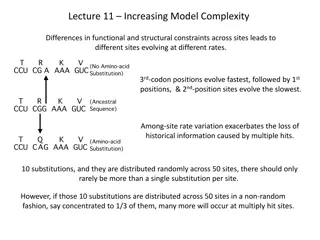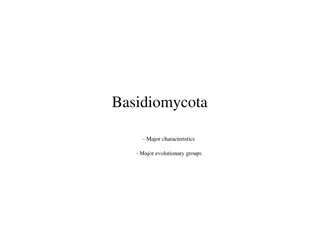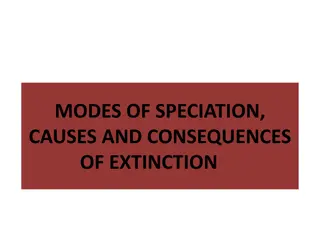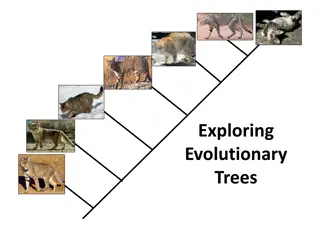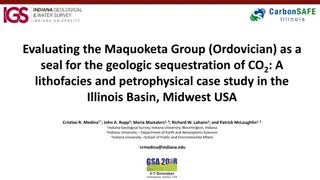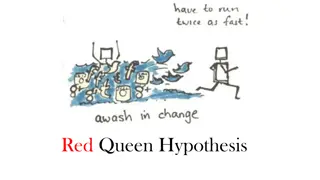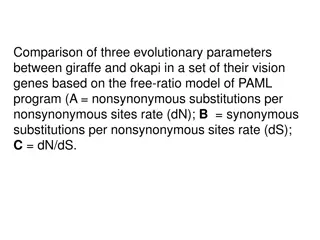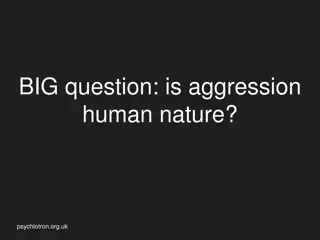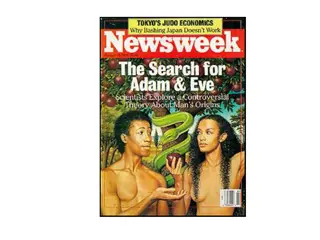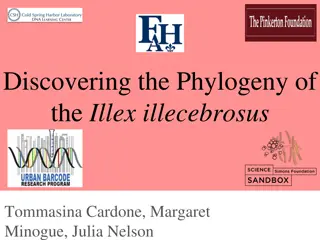Evolutionary Insights from the Ordovician Period
The Ordovician period was marked by significant events such as the average temperature and atmospheric CO2 levels, the emergence of diverse life forms, glacial events leading to mass extinctions, and the survival of the fittest in evolving environments. Primitive reefs, major evolutionary radiation of mollusks, jawless fish, and moss and fungi colonization on barren land were notable occurrences during this time period. The geological and paleontological findings provide valuable insights into the Earth's history and the evolution of life.
Download Presentation

Please find below an Image/Link to download the presentation.
The content on the website is provided AS IS for your information and personal use only. It may not be sold, licensed, or shared on other websites without obtaining consent from the author. Download presentation by click this link. If you encounter any issues during the download, it is possible that the publisher has removed the file from their server.
E N D
Presentation Transcript
MAJOR EVOLUTIONARY RADIATION OF MOLLUSKS Snail Bivalve
ORTHOCONE - ORDOVICIAN TOP PREDATOR Mollusk - nautiloid Largest animal Jet propulsion Buoyancy Carnivore Prey fish, arthropods
JAWLESS FISH Ostracoderm Less than one foot long First true vertebrates. Mouths permanently open.
PRIMITIVE MOSS AND FUNGI COLONIZE BARREN LAND Liverworts Seedless Plants Can survive on bare rock Dying tissue helps build soil
GLACIATION LEADS TO MASS EXTINCTION Co2 levels, global temperatures drop. Glaciers form causing sea levels to drop. Highly populated shallow seas are drained.
THE BEST SUITED TO THE NEW ENVIRONMENT SURVIVE
REFERENCES Advilson, Christina, Jennifer Bie, and Chirag Patel. "The Ordovician Period." The Ordovician Period. University of California Museum of Paleontology. Web. 16 Nov. 2013. <http://www.ucmp.berkeley.edu/ordovician/ordovician.php>. BBC News. BBC, n.d. Web. 3 Dec. 2013. <http://www.bbc.co.uk/science/seamonsters/factfiles/giantorthocone.shtml>. "Mollusks." Fossil Groups -. N.p., n.d. Web. 01 Dec. 2013. <http://geology.er.usgs.gov/paleo/mollusks.shtml>. "Ordovician Period." National Geographic. N.p., n.d. Web. 03 Dec. 2013. <http://science.nationalgeographic.com/science/prehistoric-world/ordovician/>. "Ostracoderm." - New World Encyclopedia. N.p., n.d. Web. 30 Nov. 2013. <http://www.newworldencyclopedia.org/entry/Ostracoderm>. "Paleoclimate." Encyclopedia Britannica Online. Encyclopedia Britannica, n.d. Web. 23 Nov. 2013. <http://www.britannica.com/EBchecked/topic/431581/Ordovician- Period/258446/Paleoclimate>. PBS. PBS, n.d. Web. 23 Nov. 2013. <http://www.pbs.org/wgbh/nova/link/hist_03.html>. Scotese, C.R., Ancient Oceans Separate the Continents , Plate tectonic maps and Continental drift animations,PALEOMAP Project (www.scotese.com) November 23, 2013. "THE ORDOVICIAN PERIOD488 TO 443 Million Years Ago." History of Earth. N.p., n.d. Web. 01 Dec. 2013. <http://www.corzakinteractive.com/earth-life-history/412_ordovician.htm>.



